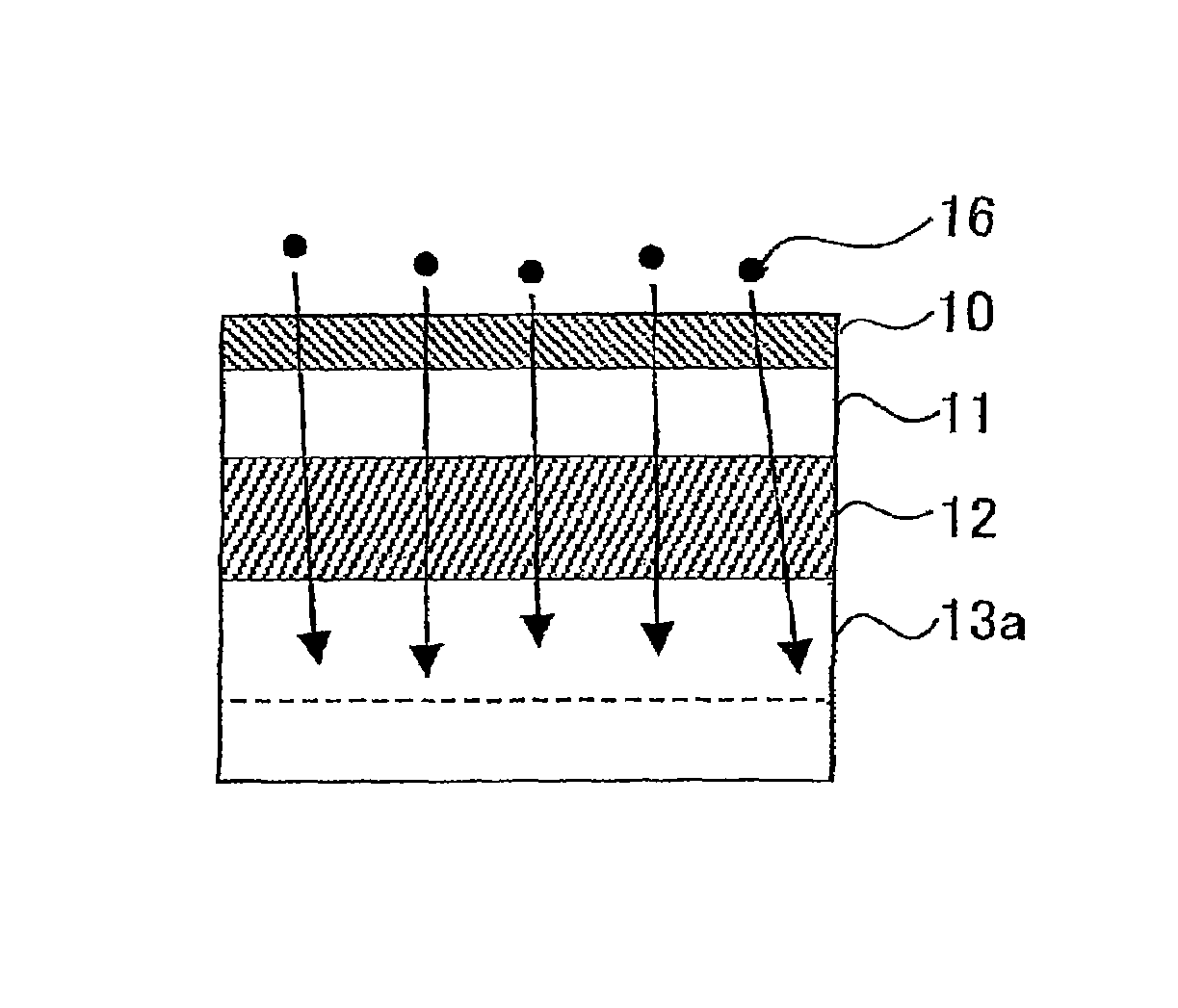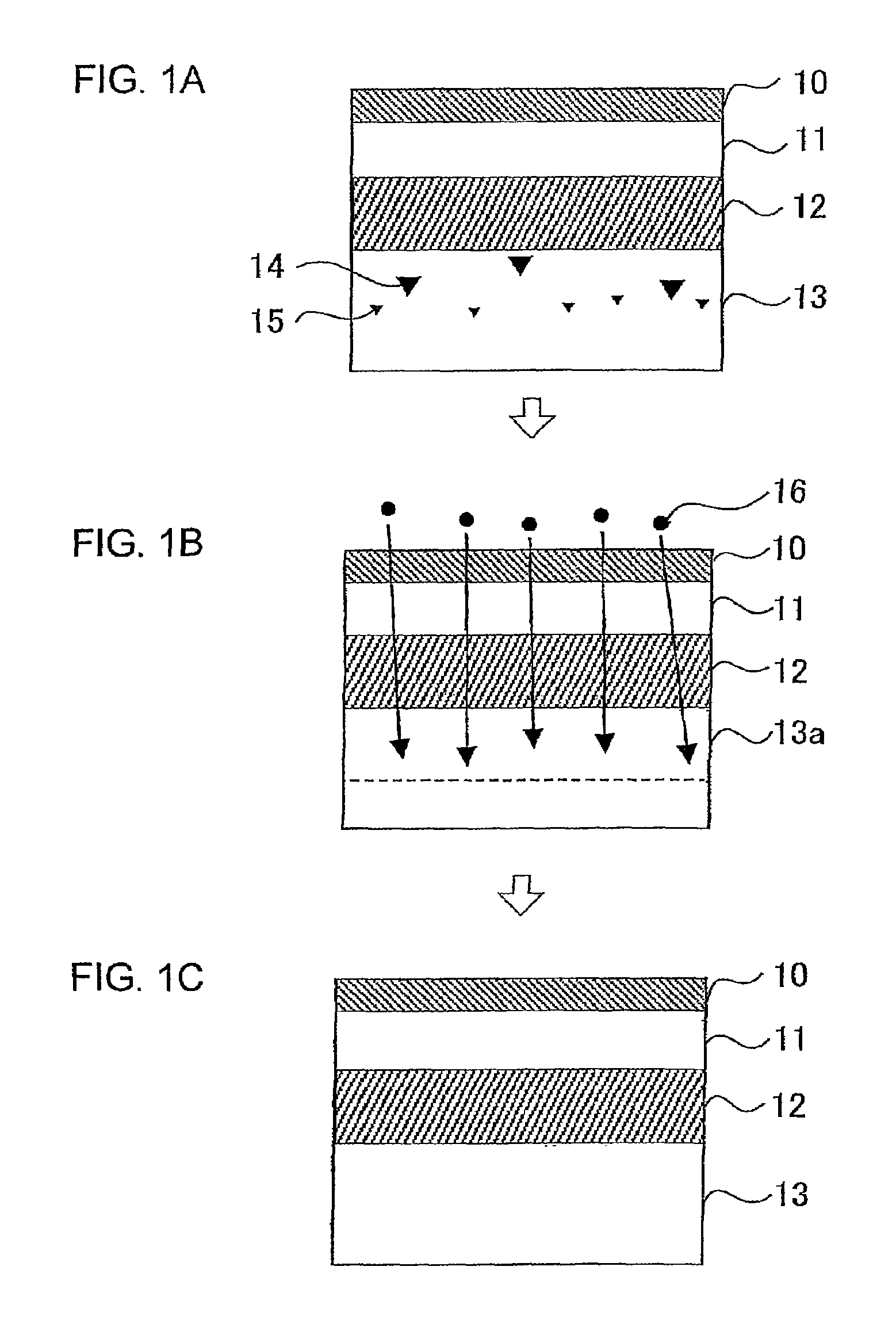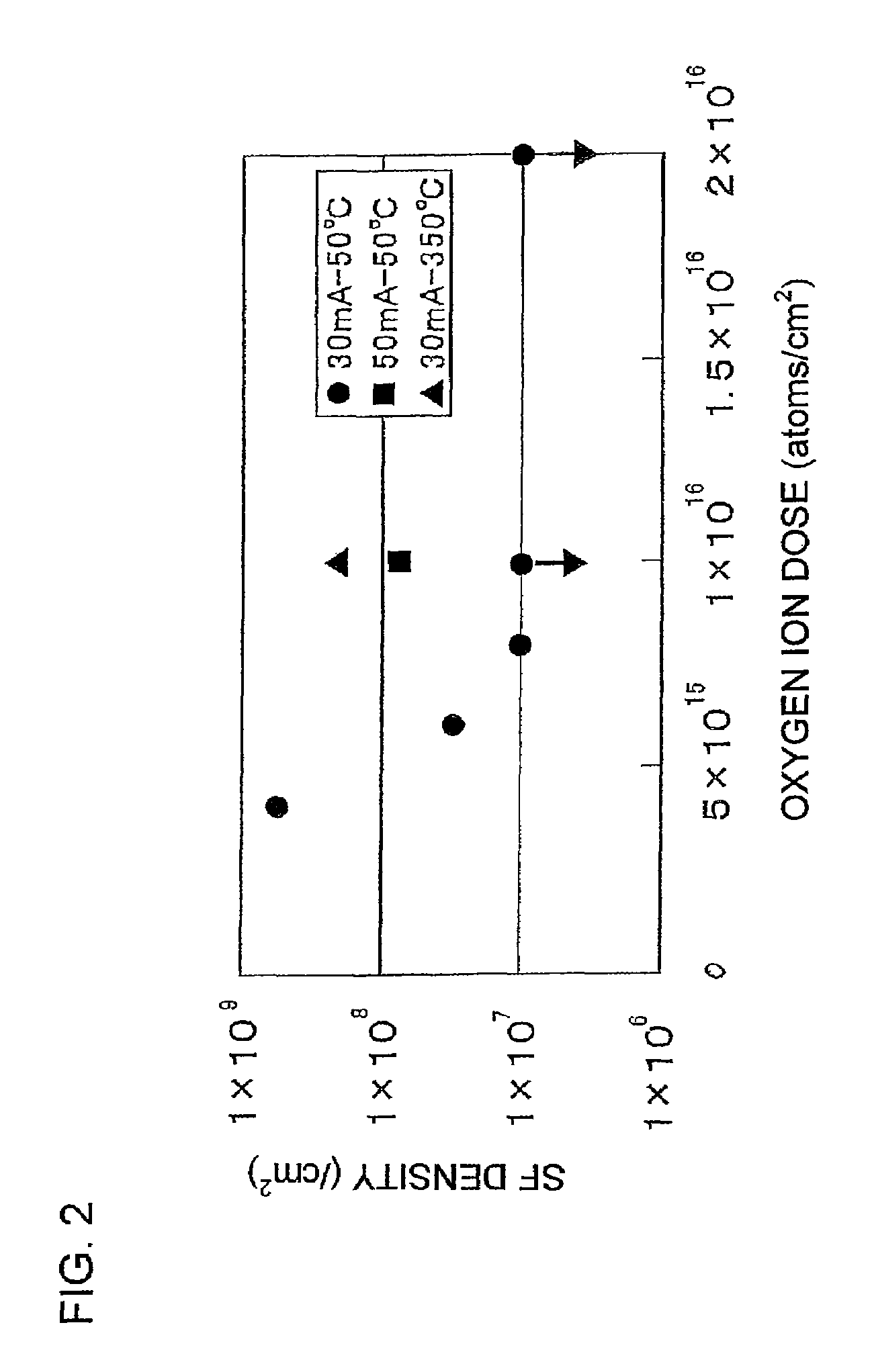Method for reducing crystal defect of SIMOX wafer and SIMOX wafer
a technology of simox wafer and crystal defect, which is applied in the direction of basic electric elements, electrical apparatus, semiconductor devices, etc., can solve the problems of wafers prone to crystal defects, thermal stress, and crystal defects remaining in the silicon layer underneath the box layer that cannot be ignored, so as to reduce the density of crystal defects, confirm the effect of reducing crystal defects, and reduce crystal defects
- Summary
- Abstract
- Description
- Claims
- Application Information
AI Technical Summary
Benefits of technology
Problems solved by technology
Method used
Image
Examples
first embodiment
[0028]FIG. 1 is a schematic view used to explain a method for reducing the crystal defects in a SIMOX wafer to which a first embodiment of the present invention is applied. The method for reducing the crystal defects in accordance with the present invention is intended for a SIMOX wafer manufactured using a SIMOX method. The method for manufacturing the SIMOX wafer is constituted by including a step of implanting oxygen ions into a silicon wafer and a step of performing a predetermined heat treatment on this silicon wafer. Any SIMOX wafers can be covered by the present invention as long as the wafers are manufactured by including these steps, even if the conditions of the respective steps differ. Consequently, SIMOX wafers manufactured using an MLD (Modified Low Dose) method, an ITOX (Internal Thermal OXidation) method, and the like can also be covered by the present invention.
[0029]In the present embodiment, an explanation will be made by taking, as an example, a SIMOX wafer manufa...
example 1
[0048]FIG. 2 is a graphical view used to explain a relationship between the dose of oxygen ions implanted into a SIMOX wafer and an SF density. The horizontal axis of the figure represents an oxygen ion dose (atoms / cm2) and the vertical axis represents the SF density ( / cm2) of a depth region of a silicon layer. Here, the depth region refers to a region 200 nm deep from a boundary between a BOX layer and the silicon layer.
[0049]In the present example, a prepared SIMOX wafer was first cleaned and dried, and then housed in an ion implantation apparatus to maintain the temperature of the SIMOX wafer at 50° C. Then, implantation energy was fixed to 216 keV and, under five test conditions in which ion doses were 4×1015 atoms / cm2, 6×1015 atoms / cm2, 8×1015 atoms / cm2, 1×1016 atoms / cm2 and 2×1016 atoms / cm2, oxygen ions were implanted for the respective test conditions. Here, a current value detected by a current detection section of the ion implantation apparatus at the time of ion implantati...
example 2
[0052]Next, oxygen ions were implanted (at a current value of 30 mA) into a pre-ion implantation SIMOX wafer with the temperature thereof raised to 350° C., by setting the implantation energy to 216 keV and the oxygen ion dose to 1×1016 atoms / cm2. Thus, there was evaluated the SF density of the SIMOX wafer treated under the same heat treatment conditions as those in Example 1. The result of this evaluation is represented by the symbol Δ and is shown in FIG. 2. From the result of FIG. 2, it was confirmed that if the temperature of a pre-ion implantation wafer was made higher, the decrement of the SF density reduced. The reason for this is that, as the result of ion implantation being performed at a high temperature, SFs do not fully vanish since recrystallization progresses during implantation. Accordingly, it is preferable to maintain the temperature of a pre-ion implantation SIMOX wafer at 50° C. or lower.
PUM
 Login to View More
Login to View More Abstract
Description
Claims
Application Information
 Login to View More
Login to View More - R&D
- Intellectual Property
- Life Sciences
- Materials
- Tech Scout
- Unparalleled Data Quality
- Higher Quality Content
- 60% Fewer Hallucinations
Browse by: Latest US Patents, China's latest patents, Technical Efficacy Thesaurus, Application Domain, Technology Topic, Popular Technical Reports.
© 2025 PatSnap. All rights reserved.Legal|Privacy policy|Modern Slavery Act Transparency Statement|Sitemap|About US| Contact US: help@patsnap.com



